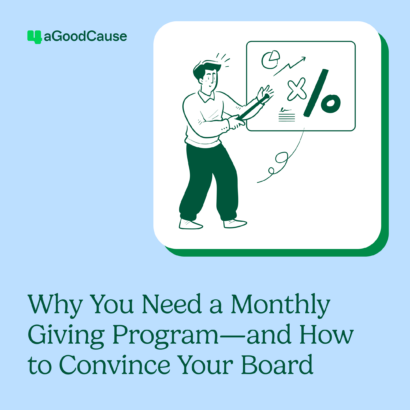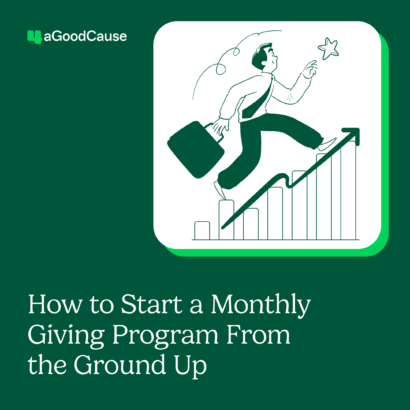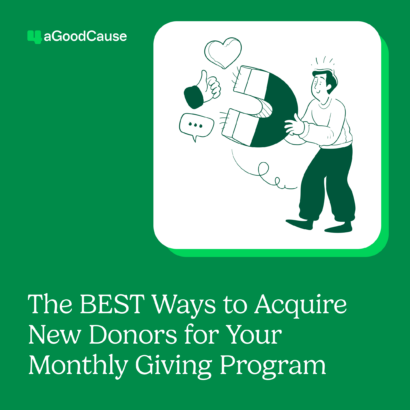Social media is one of the most inspiring tools for giving according to 29% of online donors. It is a tactic that can have exponential reach and can create an influencer pool larger than what we’re able to do in person. For many nonprofits, social media has become a natural part of their messaging and giving strategies.
However, there are some pitfalls to using social media for fundraising. If you’re simply using it as a means to an end, it’s likely not something that will sustain your organization for the long haul. Check out these social media fails and how you can correct these snafus to bring out the best in your online fundraising.
1. You’re not posting enough
If you’re going for once-a-week posting on social media, you’re missing a host of people who are available to see your content. Social media moves fast—and some channels (Twitter, Snapchat) move much faster than others. While we want quality posts, the amount of content you post online also affects whether you’re seen. Post too little and it’s likely that you won’t get as high of engagement and interaction with your posts as if you were to post multiple times a week (or day, depending on the channel).
How to fix: Learn about social media cadence and algorithms so that your posts hit the mark. Dig into your analytics, learn when your audience is online (and engaged) and read up on best practices for the number of posts based on channels. Hootsuite is a good resource to get you started.
2. You’re not using the right channels
Understanding your target audience is key to social media success regardless of if you’re using it for fundraising or general nonprofit brand awareness. Use the channels that your audience uses, not the channels you are most comfortable with. If you’re trying to reach Gen Z, for example, Facebook is not the place to be.
How to fix: Identify personas or target audiences you’re trying to reach and specifically indicate which social media channels they trust and are active on. Research the channels to identify large percentages of users based on the demographics that are important to your organization and your campaign.
3. You’re only posting donation content
You need to build a foundation—a relationship—before you start asking for things or expecting something from others. This is true of social media, too. If you only use your channels when it’s time to ask for money, your audience will see right through that. Create a mix of content that is engaging, educational, thank donors for their time and resources, highlights the great things you’re doing in the community, and then sprinkle in your fundraising asks.
How to fix: Use a social media content calendar to plan out posts. This will help you sort posts into categories such as content that is campaign-specific, just for fun, external links, video-based, educational, etc. Content calendars also provide a visual way to see where there may be gaps in your content or where content types are too heavy in one area (or on one channel).
4. You’re pushing vs. engaging
Social media is social. Interactive. Conversational. When people engage with your content through comments, likes, shares, etc., they want to see that engagement reciprocated. If you’re only there to push out content from your agenda, you’ve lost the meaning behind the channels.
How to fix: Concentrate on building relationships. Identify which person or people on your team will monitor engagement on your social media channels and respond in timely fashion. Use third-party listening tools such as SproutSocial, Hootsuite or Meltwater to get notified when donors are interacting with your content so you can be there to react. Set pre-established answers to some of the more frequently asked questions to make monitoring easy and succinct across teams.
5. You’re using the same content on all channels
Each social media channel is designed differently—different audience types, different mediums, different character counts and imagery sizes—your content should match the channel. While there are ways to mass schedule your content all at once on all channels, you may frustrate users of those channels by doing so because you’re not customizing the content to how they prefer to digest it.
How to fix: Content planning takes time and if you don’t have much of it, then you can still use ‘umbrella’ concepts and turn them into bite-sized pieces across all channels. For example, if you have a series of posts dedicated to your fundraising campaign, put them into a content calendar where you can see them visually across each social media channel and then change the phrasing, word count, imagery or text links to match the parameters of each channel. Your overall message remains the same, but the context, length and supporting pieces are customized for each channel. Your audience will thank you for that.
6. Your images are cut off or non-existent
A picture speaks a thousand words and if it’s cut off or undecipherable, it’s missed the mark. We’ve all seen links on social media that are missing images, have fuzzy or super-enlarged images or images that are cut off at weird sections. There is a way to fix this and it’s important that you’re putting your best visual foot forward when creating social media content.
How to fix: First, check your website to ensure you have feature images set for any donation pages, links or URLs that you will share during your campaign to social media. If those feature images aren’t set, it’s likely that when you post your link, it will show up as text-only. Images grab attention; use them. If you don’t have the option to set feature images, create a branded set of imagery specific to your fundraising campaign (and ensure they are created in the correct size specs for each social media channel). Use these images throughout your campaign to create consistency.
7. Your message is missing
You’re not selling a car or a pair of sneakers, you’re raising funds for a great mission and cause. You’re making a change in your community. You’re impacting the lives of those around us. If you put out donation links without context or use a sales approach in your messaging, you’re not getting to the crux of who you are and why donors should care to give you money.
How to fix: Share those stories instead of using “donate now!” or “sales” messaging. Clearly define what your story is, how you will share your message and develop compelling social media content around that messaging throughout the campaign.
Social media is a great way to expand your nonprofit’s impact, reach and, ultimately, donor base. As you develop new fundraising campaigns, don’t forget to incorporate social media into the strategy and plan for the content (and channels) that will be used throughout.



